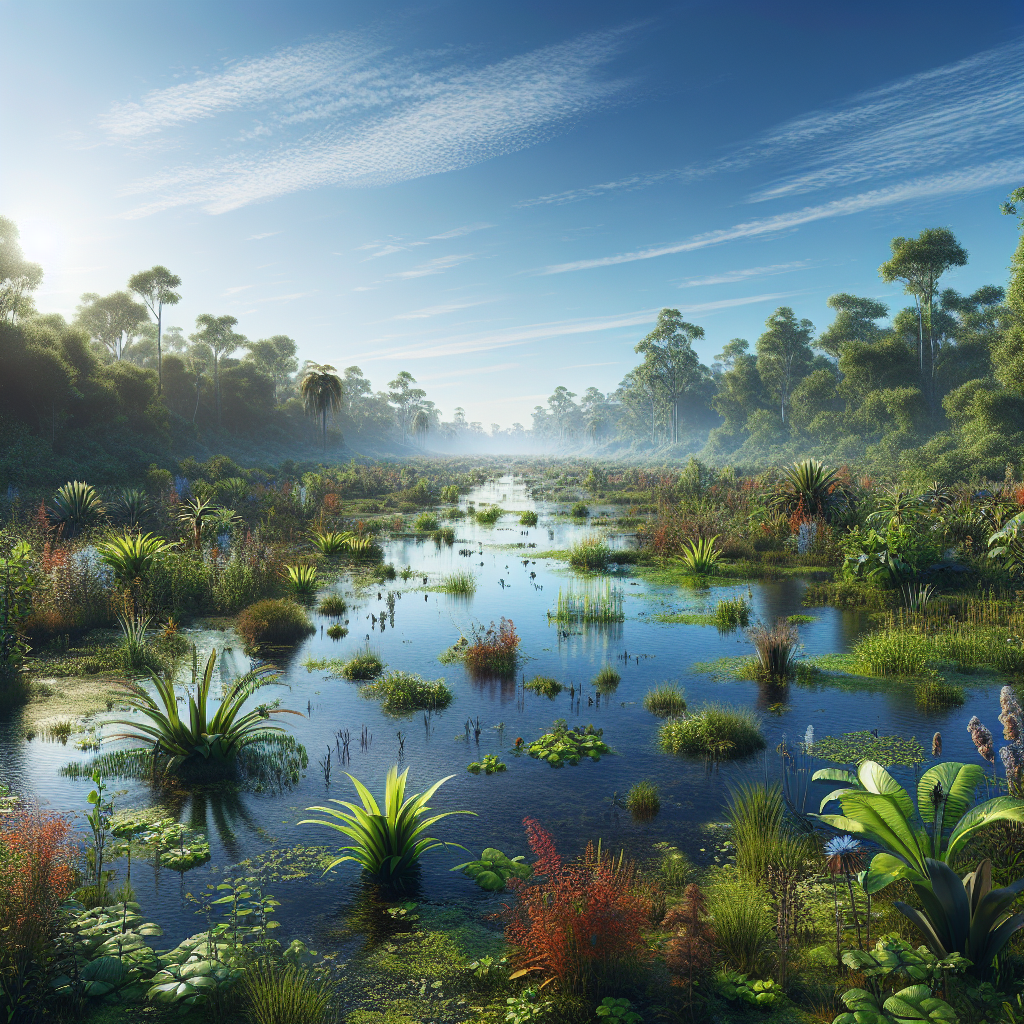The Importance of Wetlands in Water Conservation
Wetlands, often referred to as the Earth’s kidneys, play a crucial role in maintaining the global water cycle and supporting a diverse range of flora and fauna. They are among the most productive ecosystems in the world, comparable to rain forests and coral reefs in their biodiversity. Despite their vital importance, wetlands continue to be among the most threatened habitats, largely due to human activity and climate change. Understanding the role of wetlands in water conservation is critical for their protection and the sustainability of water resources.
Wetlands Defined
Wetlands are areas where water covers the soil or is present either at or near the surface of the soil all year or for varying periods during the year, including during the growing season. They can be freshwater, brackish, or saltwater and are found from the tundra to the tropics and on every continent except Antarctica. Wetlands vary widely because of regional and local differences in soils, topography, climate, hydrology, water chemistry, vegetation, and other factors.
Functions of Wetlands in Water Conservation
1. Water Purification: Wetlands act as natural water purifiers. As water moves through a wetland, sediment, pollutants, and nutrients are trapped by plant matter and microorganisms. This process effectively removes harmful substances from the water, improving its quality before it re-enters the groundwater systems or flows into rivers, lakes, and oceans.
2. Flood Control: Wetlands function as natural sponges, absorbing and storing excess rainfall and reducing flooding during storm events. By slowing down water flow, wetlands give rivers more time to discharge their waters into the sea, greatly reducing the potential for flood damage.
3. Groundwater Recharge: Wetlands contribute to the replenishment of aquifers, which are critical sources of fresh water for agricultural, industrial, and domestic use. During wetter periods, wetlands can directly transfer water to the groundwater reservoir, ensuring its availability during dryer periods.
4. Erosion Control: The roots of wetland plants stabilize soil and protect shorelines from erosion caused by waves and currents. This is particularly important in coastal areas where erosion can lead to the loss of land and property.
5. Climate Change Mitigation: Wetlands store significant amounts of carbon, making them important carbon sinks. By preserving and restoring wetlands, we can mitigate some of the effects of climate change through natural carbon sequestration.
Challenges to Wetland Conservation
Despite their importance, wetlands face numerous threats. Drainage for agriculture, urban development, pollution, invasive species, and climate change are among the most significant challenges. The loss of wetlands not only threatens biodiversity but also reduces the ability of these ecosystems to perform their critical functions in water conservation.
The Path Forward
Protecting and restoring wetlands is essential for sustainable water management and for the resilience of communities to climate change. Efforts to conserve wetlands include establishing protected areas, implementing wise use practices that promote sustainable use of wetlands, and restoring degraded wetlands. Public awareness and community involvement are also crucial for the success of conservation efforts.
FAQs
Q1. Why are wetlands often called the Earth’s kidneys?
A1. Wetlands are called the Earth’s kidneys because of their function in filtering pollutants and nutrients from water, similar to how kidneys filter blood in the human body.
Q2. Are all wetlands the same?
A2. No, wetlands vary significantly based on their location, the type of water they contain (fresh, brackish, or salt), and other environmental factors. There are many types, including marshes, swamps, bogs, and fens.
Q3. How do wetlands help in flood control?
A3. Wetlands absorb and store excess rainfall and surface runoff, reducing the speed and volume of water that reaches rivers and streams, thereby helping to control floods.
Q4. What is a major threat to wetlands?
A4. One of the major threats to wetlands is drainage for agricultural use and urban development, which destroys the wetland habitat and its ability to function in water conservation.
Q5. How can I help protect wetlands?
A5. You can help protect wetlands by supporting wetland conservation initiatives, participating in local wetland restoration projects, and raising awareness about the importance of wetlands. Additionally, reducing pollution and advocating for sustainable land use policies can contribute to wetland protection.
In conclusion, wetlands are indispensable for water conservation, protecting against floods, purifying water, and supporting a rich biodiversity. Recognizing the value of wetlands and taking action to protect these natural treasures is imperative for the health of the planet and future generations. By fostering a greater understanding of the importance of wetlands in water conservation, we can ensure these ecosystems are preserved and continue to benefit humanity and the environment alike.

